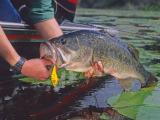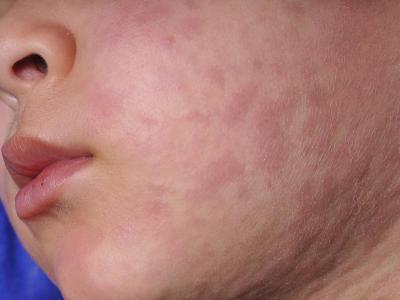Oct 12, 2005 (CIDRAP News) An outbreak of illness among cruise ship passengers in Alaska in 2004 led to the detection of disease-causing oysters about 620 miles farther north than they had ever been found before, possibly as a result of warming ocean waters.
The report in last week's New England Journal of Medicine also suggests that current national standards for bacterial contamination in raw oysters may be too high, because oysters linked with the outbreak had contamination levels far below the standards.
The cruise ship passengers got sick after eating raw oysters, and tests in most cases pointed to Vibrio parahaemolyticus, says the report by Joseph B. McLaughlin, MD, MPH, and colleagues from the Alaska Department of Health and Social Services and several other health agencies. The sound where the oysters were harvested was warmer at the time of the outbreak than in any of the preceding six summers.
"The investigation extends by 1,000 km the northernmost documented source of oysters that caused illness due to V. parahaemolyticus," the report says. "Rising temperatures of ocean water seem to have contributed to one of the largest known outbreaks of V. parahaemolyticus in the United States."
V parahaemolyticus is the most common cause of seafood-related gastroenteritis in the United States, the article says. Strains that cause illness usually carry a virulence factor called thermostable direct hemolysin, or tdh. But before 2004, Alaskan waters were thought to be too cold to support pathogenic levels of V parahaemolyticus in oysters.
The outbreak surfaced in mid-July of 2004 when several passengers on a 78-passenger cruise ship on Prince William Sound in southeastern Alaska fell ill. A passenger from Nevada was diagnosed with a V parahaemolyticus infection after he returned home.
The reports prompted Alaska health officials to launch a retrospective cohort study of passengers from four July 2004 cruises, along with a general search for people who had become sick after eating Alaskan oysters. The researchers also investigated the ship and the oyster farm that supplied it (farm A) and looked for the sources of oysters associated with other cases found. The probe included looking at water-temperature data from farm A, where temperatures had been recorded regularly since 1997.
The authors interviewed 132 passengers from the four cruises, of whom 22 (17%) met the case definition for gastroenteritis related to raw oysters. Oysters and two other seafoods served on the ships were linked with illness in the initial analysis, but further statistical analysis showed that oysters were the only significant predictor of illness (adjusted odds ratio, 5.2; 95% confidence interval, 1.47 to 18.54). The affected passengers had eaten a median of only one oyster.
In their broader search, the investigators found a total of 62 people who met their case definition, including 14 from the retrospective cohort study. Twelve people had sought medical treatment, but none were hospitalized. Stool samples were collected from 10 patients; all yielded V parahaemolyticus. Of eight isolates analyzed by the Centers for Disease Control and Prevention, seven were the same serotype, and all were positive for tdh.
Two samples of oysters harvested at farm A (17 oysters total) were found to contain V parahaemolyticus at low levels (2.1 to 3.5 most-probable-number [MPN] per gram). The researchers gathered 96 samples from 17 Alaska oyster farms and found the pathogen in 31 (32%). The samples containing V parahaemolyticus all came from Prince William Sound or elsewhere in southeastern Alaska. About three quarters of the isolates were positive for tdh.
Temperature data showed that all oysters from farm A that were implicated in the outbreak were harvested when the water was warmer than 15.0°C (59° F). In mid-2004, the water in the area was almost 2°C warmer than it had been in any of the previous six summers, and the mean temperature stayed above 15.0°C much longer than it had in the preceding years.
The authors say their findings support the hypothesis that a water temperature above 15.0°C when oysters are harvested signals an increased risk of V parahaemolyticus infection from raw oysters.
They write that other V parahaemolyticus outbreaks have been linked with oysters gathered from waters at temperatures like those found near southern Alaska. They add, however, "Warming ocean waters may well have contributed to this outbreak, but changing patterns of animal migration and discharged ballast water may also have played a role."
The report says the levels of V parahaemolyticus found in oyster samples (MPN estimates) were "1500 times lower than the current National Shellfish Sanitation Program guidelines for harvested oysters (5000 MPN per gram) and 3000 times lower than the FDA's level of concern (10,000 MPN per gram) for ready-to-eat seafood, including raw oysters."
In view of the findings, the authors recommend reconsideration of the current shellfish safety guidelines and suggest various precautions to prevent illness when water temperatures at oyster farms exceed 15°C. They also call for regional assessments of risks related to V parahaemolyticus.
McLaughlin JB, DePaola A, Bopp CA, et al. Outbreak of Vibrio parahaemolyticus gastroenteritis associated with Alaskan oysters. N Engl J Med 005 oct 6;353(14):1463-70 [Abstract]


















